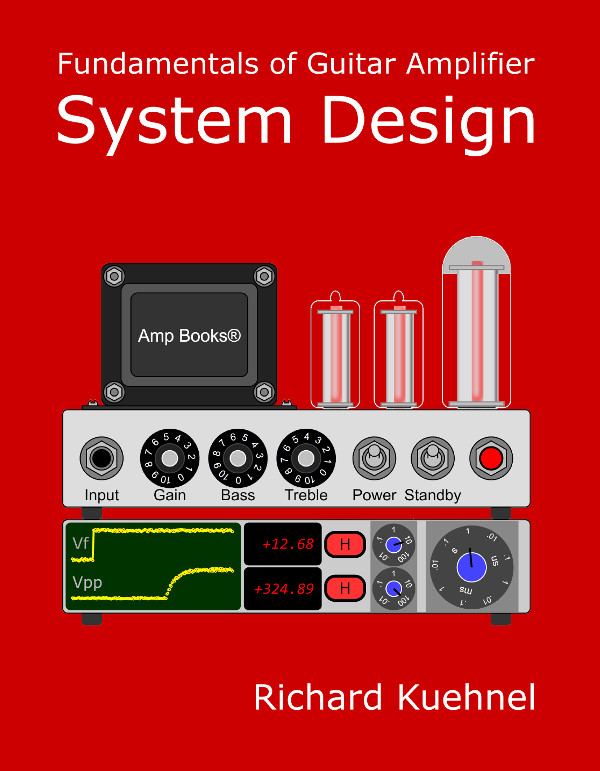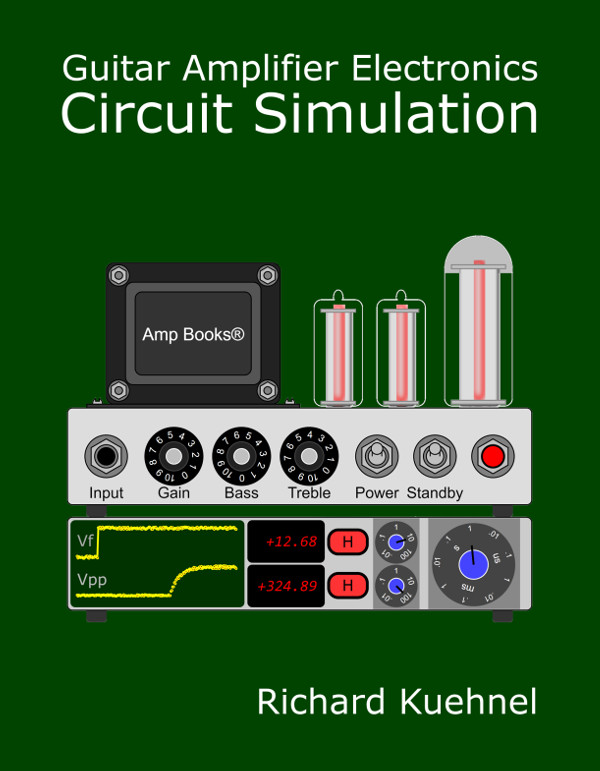Masco Low-Power 6L6 Power Amp
The Masco MAP-15 is not at the top of most lists of classic guitar amplifiers, but it has redeeming qualities where it matters most.
"All this comes in a fairly flimsy cab, and the chassis doesn't appear to have been built to last twenty years, much less sixty. But, hey, it's a light lift, and if you avoid knocking it around, this Masco combo can make a surprisingly good-sounding club rig." 1 -Dave Hunter
The power amp has a pair of 6L6 beam power tetrodes in a push-pull configuration, from which we can expect a lot of power. Back in 1946 when the amp was produced, however, no more than about 20 watts was considered the maximum plate dissipation for a 6L6, not the 30 watts for a modern 6L6GC. The MAP-15 design thus offers an interesting feature: a push-pull 6L6 power amp that is designed to break into overdrive at substantially lower volume levels. Let's take a closer look.
Masco's design does not use screen resistors to protect the tubes from the effects of overdrive. This is understandable, because "overdrive" was not in the repertoire of amp designers until decades later.

The screen and plate voltages are the same, so we can use 6L6 triode-connected curves to determine the DC operating point. The triode's "plate current" represents the sum of the plate current and screen current, i.e. the total current that passes through the 200Ω cathode resistor. The current through the resistor is from two tubes, so the equivalent resistance for one tube is 400Ω. If the cathode voltage is 15V, 20V, or 25V, then according to Ohm's Law the plate current is
15V / 400Ω = 37.5mA
20V / 400Ω = 50mA
25V / 400Ω = 62.5mA
These three points create the two red line segments shown here.


|
Guitar Amplifier Electronics: Fender Deluxe - from TV front to narrow panel to brownface to blackface Reverb |
From another perspective, if the cathode voltage is 15V, 20V, or 25V, then the plate-to-cathode voltage is
320V - 15V = 305V
320V - 20V = 300V
320V - 25V = 295V
These points create the two blue line segments.
From a third perspective, if no current flows through the cathode resistor, there is no voltage across it and the plate-to-cathode voltage is 320V. If the plate current is 80mA, on the other hand, then the cathode voltage is
(80mA)(400Ω) = 32V
The plate-to-cathode voltage is therefore 288V. These two endpoints create the orange line. The intersection of these perspectives puts the screen voltage in the vicinity of 300V with a 200Ω "self-bias resistor," which is included as an example design in an RCA 6L6 data sheet.

The entries at the top of the table demonstrate that the example operates near the maximum values for an "all-metal" 6L6, which is more limited that a modern-day 6L6GC.

The key differences between the data sheet example and the MAP-15 are the plate voltage and the output power. Masco reduces the high-voltage requirement for its power supply and the power handling requirements for its output transformer and speaker.

|
Guitar Amplifier Electronics: Basic Theory - master the basics of preamp, power amp, and power supply design. |
The red load line shown here for the RCA example intercepts the knee of the curve for a 300V screen.

The blue load line is for the MAP-15, which is rotated slightly clockwise (6.4kΩ plate-to-plate versus RCA's 6.6kΩ). The intercept points for the 300V curve are at 45V, 163mA and 60V, 205mA. With its choice of plate voltage and primary impedance, Masco was clearly not trying to optimize output power:
(300V - 45V)(163mA) / 2 = 21W
(400V - 60V)(205mA) / 2 = 35W

|
Fundamentals of Guitar Amplifier System Design - design your amp using a structured, professional methodology. |
One road not taken would be to reduce the output transformer primary impedance to intercept the knee, thereby achieving maximum output power for a 300V screen and a 300V plate.

This is what a 1946 textbook would advise. Based on the endpoints, the load line has a slope of
300V / 268mA = 1.1kΩ
For a Class AB design close to Class B, the plate-to-plate primary impedance is four times greater: 4.4kΩ. Based on the 300V intercept point (blue dot), the output power for this choice of transformer is approximately
(300V - 65V)(210mA) / 2 = 25W
On the other hand, pushing the Masco to 25 watts could also push it beyond Dave's "surprisingly good-sounding club rig."
References
1Dave Hunter, Amped, (Minneapolis: Voyageur Press, 2012), p. 13.
2Richard Kuehnel, Guitar Amplifier Electronics: Basic Theory, (Seattle: Amp Books, 2018).

|
From system design concepts to individual stage operation, an all-new examination of Bassman electronics. |



